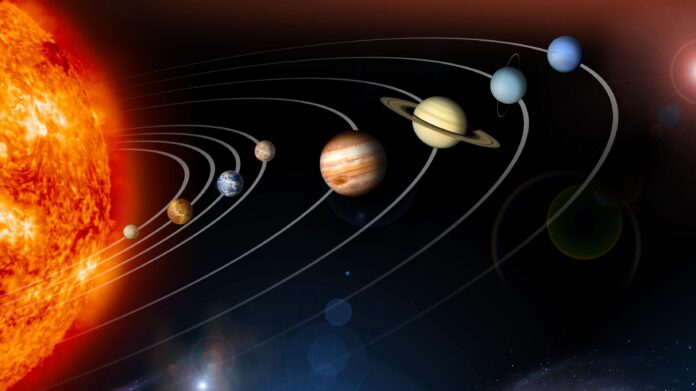Have a guess or a few guesses then watch this.
I was surprised. Were you?
Most would have guessed Venus as I did.
However, as explained above, it’s important to note that the distance between Earth and Venus can vary significantly due to their elliptical orbits around the Sun.
The Solar System
The solar system, a breathtaking ensemble of celestial bodies, has captivated human imagination for centuries. It is an intricate dance of planets, moons, asteroids, and comets, all revolving around a radiant star known as the Sun. From the scorching inferno of Mercury to the frigid outer reaches of Neptune, our solar system offers a remarkable tapestry of cosmic marvels, inspiring awe and deepening our understanding of the vastness of the universe.
At the heart of our solar system lies the Sun, an immense ball of seething plasma that illuminates and nourishes all the worlds within its gravitational embrace. Its colossal energy production through the process of nuclear fusion sustains life on Earth and provides the radiant warmth that pervades our days. The Sun’s powerful magnetic field gives rise to spectacular solar flares and mesmerizing coronal mass ejections, reminding us of its immense power and complexity.
The Terrestrial Planets Moving outwards from the Sun, the terrestrial planets of Mercury, Venus, Earth, and Mars reside in relatively close proximity. These rocky worlds, each with their unique characteristics, bear witness to the diverse outcomes of planetary formation. Mercury, the closest planet to the Sun, boasts a barren and cratered surface, enduring scorching temperatures during the day and chilling coldness at night. Venus, shrouded by a thick atmosphere of corrosive gases, experiences a runaway greenhouse effect, rendering it the hottest planet in our solar system. Earth, our cherished home, teems with life, harboring a rich variety of ecosystems and supporting a thriving human civilization. Mars, often referred to as the “Red Planet,” possesses intriguing geological features and tantalizing hints of a potentially habitable past.
Jupiter and Saturn Beyond the realm of the terrestrial planets lie the gas giants, Jupiter and Saturn. These colossal behemoths, composed mostly of hydrogen and helium, epitomize the grandeur and majesty of the outer solar system. Jupiter, with its iconic Great Red Spot—a colossal storm system—exhibits swirling cloud bands and hosts a retinue of intriguing moons, including Europa, Ganymede, and Io. Saturn, renowned for its magnificent system of rings, captivates onlookers with its ethereal beauty. These gas giants are celestial marvels that expand our understanding of planetary dynamics and the complexities of atmospheres.
Uranus and Neptune As we venture farther into the frigid outskirts of the solar system, we encounter Uranus and Neptune, the ice giants. These enigmatic worlds, composed mostly of ices such as water, ammonia, and methane, boast fascinating features hidden beneath their icy exteriors. Uranus, tilted dramatically on its side, presents a unique axial orientation, while Neptune’s turbulent atmosphere showcases storms, such as the iconic Great Dark Spot. These distant worlds remain tantalizing enigmas, calling for further exploration and study.
Between the orbits of Mars and Jupiter, lies the asteroid belt, a region bustling with countless rocky remnants from the early stages of solar system formation. The asteroid belt serves as a treasure trove of information about the composition and history of our cosmic neighborhood. Additionally, far beyond the reaches of Neptune lies the Kuiper Belt, home to icy bodies like Pluto, as well as other dwarf planets and trans-Neptunian objects. These regions remind us of the infinite possibilities and mysteries that lie beyond the familiar planets.
The solar system, an awe-inspiring symphony of planets, moons, asteroids, and comets, reveals the boundless wonders of the cosmos. From the Sun, the life-giving heart
Douglas James
Join us in helping to bring reality and decency back by SUBSCRIBING to our Youtube channel: https://www.youtube.com/channel/UCQ1Ll1ylCg8U19AhNl-NoTg and SUPPORTING US where you can: Award Winning Independent Citizen Media Needs Your Help. PLEASE SUPPORT US FOR JUST £2 A MONTH https://dorseteye.com/donate/







